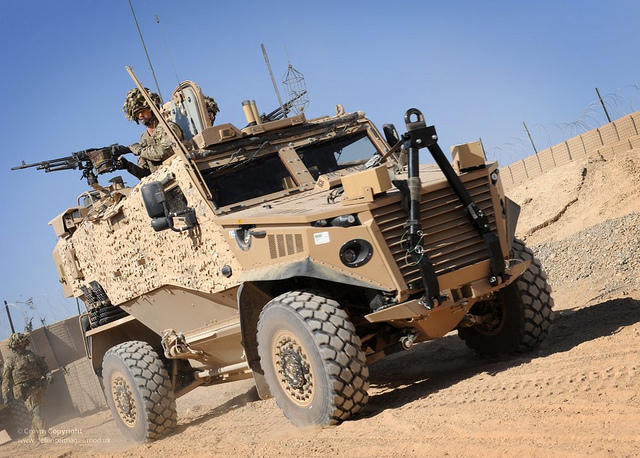Professor Bryn James, Senior Fellow from the Physical Protection Group at Defence Science and Technology Laboratory (DSTL) outlines how new technology is helping frontline troops stay protected
The pace of delivery of new technology to frontline troops has increased significantly over the last few years. This acceleration of delivery is illustrated well in the provision of protection technology for armoured vehicles and for dismounted troops. Previously, it could take a decade to implement a new armour system on a vehicle and that system might be extant for several decades. Recently, some vehicles have had 4 or 5 protection upgrades over a period of 3 or 4 years in response to changes in threat, and as new and better protection has been developed. In some cases, the time from idea to fielding could be measured in weeks.
The pace of development of other types of technology for armoured vehicles has also increased significantly, resulting in the fitting of new, more capable sensors, communications and electronic countermeasures along with the protection upgrades.
Much of this new technology has been implemented on legacy platforms that were not designed initially to take advantage of such rapid developments. Consequently, many of our armoured vehicles are currently crowded with bespoke fittings of electronic equipment and have applique armour systems that are difficult and expensive to fit and maintain.
The answer to this predicament is to design armoured vehicles in such a way that upgrades, improvements and enhancements in capability may be most easily accommodated. We would like armour systems to be modular and adaptable, so that layers can be added or removed dependent upon threat levels. We would like changes and additions to the electronic architecture to be “plug and play”.
To facilitate this ideal, the UK Ministry of Defence (MOD) has developed the Land Open Systems Architecture. The part of this that refers to vehicles is the Generic Vehicle Architecture (GVA) standard (Def Stan 23-03) that specifies the mandatory standards to be used in the design and implementation of infrastructure and interfaces for Land platforms. The GVA has already achieved a lot. The Scout SV armoured vehicle, the latest platform under development for UK MOD, is GVA compliant, as in the Foxhound (pictured). However, GVA is a work in progress that will eventually allow us to specify all the interfaces of all the components that go to make up the integrated structure of an armoured vehicle.
It may not seem like rocket science, but the implications of the GVA are huge. The potential for even quite a basic concept such as a “quick-fit”, common armour mounting configuration across multiple platforms carries with it some very attractive consequences: significant reductions in logistic complexity, ability to upgrade very quickly in response to a change in threat, ability to add layers (low threat: low weight, high threat: higher weight, more layers), ease of repair and replacement, addition of functionality (camouflage, sensors, etc.). Most of all though, such a concept would allow much more rapid, much easier implementation of new protection technology, as it is developed.
Eventually we may move away from having vehicle types all configured in the same way. With advances in modularity it is feasible that we might have a store of different protection technologies that could be fitted as required to a small number of platforms to make them ideally suited for a particular operation, or even for a single particular mission, taking advantage of developments, as they arise, to give vehicles the very best possible protection and capability.
This is already happening, it can only get better.
Professor Bryn James
Senior Fellow – Armour & Protection, Physical
Protection Group, Physical Sciences Department
Defence Science and Technology Laboratory (DSTL)


























